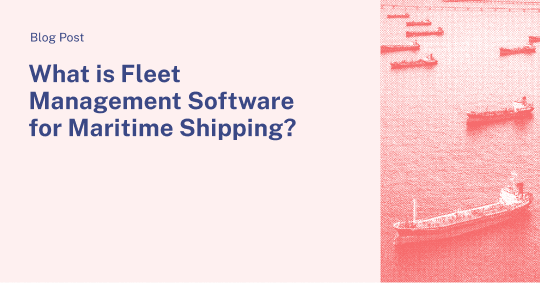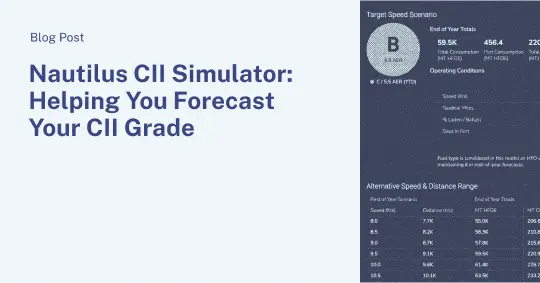Ship owners and charterers: the relationship is often contentious and, at best, a friendly tug-of-war over accounting costs. Each party enters into a long-term charter with something to gain, but their respective incentives rarely align. Owners time charter their vessels as a way to hedge their books in an uncertain market; while charterers receive assurance that they have secured sufficient tonnage to move their cargo cost-effectively, regardless of spot market volatility. But the status quo—from minimal data sharing, to buffered consumption tables, to arbitration and issuance of claims—is costing all parties valuable time and money. But the tide is turning.
At Nautilus, we believe that technology can align all of the competing interests and incentives of a charter-party relationship. As part of our series on the importance of partnership and transparency in achieving operational excellence, we discuss how technology can streamline the process of striking and adhering to charter party agreements and ensure that both sides win through open collaboration. The industry faces increased uncertainty while working towards the IMO’s 2050 mandate to reduce CO2 emissions by 50%. In the last 12 months alone, there have been numerous disruptions: fuel changes, scrubber delays, the fuel price collapse and a global pandemic, just to name a few. Our team believes that the path forward is clear: scaling up data transparency in order to shift the paradigm, and align parties around one single source of truth. This transformation is a prerequisite to meeting industry goals and for building sustainable operations that outlast market volatility. Whereas that current practice has charterers beholden to a massively fragmented information ecosystem, and owners have no incentive to provide deeper insight, we have an opportunity for a different kind of new normal.
Owners and charterers could and should have access to real-time performance data through tools like Nautilus, unlocking meaningful upside for owners in marketing their vessels and charterers operating the vessels.
There is a growing asymmetry of information between owners and charterers.
From an owner’s perspective, locking in a charter is often more important than being able to advertise the vessel’s consumption perfectly. For too long, the market has relied upon the obscure nature of noon-report based vessel descriptions to hide overconsumption and avoid performance claims. With sensor-based high frequency data collection becoming the gold standard for performance analysis, owners are beginning to gain a commercial advantage by accessing a vessel’s real-time speed and consumption to justify vessel market descriptions and more informed buffering decisions. This type of decision support empowers owners to market vessels of varying efficiencies with higher fidelity.
Because owners are penalized for vessel underperformance—and don’t benefit from overperformance—there is little reason for them to share real-time data. They have, perhaps understandable, concerns about letting charterers see the man behind the curtain because in our current construct this will undoubtedly expose them to more scrutiny and, therefore, more claims, with limited upside. On the other side, given this one-sided possession of information, charterers are limited in their ability to optimize the chartered vessel for performance in their daily operations. Even if the vessel is accurately marketed, the charterer is still reliant on noon-data for tracking and optimizing the vessel, which is insufficient for robust analysis and optimizations made available by modern technology. The punitive nature of this dynamic must change to encourage transparency and increase both value and efficiency on all sides.
Charterers with access to a vessel’s real-time data can use tools like Nautilus Platform to optimize voyages and realize a 5-7% bunker reduction.
Scale that savings across a fleet of 100+ vessels and an organization’s books look very different. And if the larger market can adopt this framework of data transparency, the entire industry will reduce consumption and emissions while reaping commercial benefits in both hard currency and time saved.
There is upside in data sharing for the owners, as well. In the article, Building Strong Charter Relationships When Fuel Quality is Dubious, we explore a specific example of an owner using Nautilus to successfully negotiate a perceived claim with their charterer. Information is power and using the right data to inform business decisions ensures that owners are maximizing their profit opportunity and mitigating claim exposure.
Nautilus is committed to empowering shipping leaders with the insights they need to achieve operational excellence.
Realigning the charterer/owner relationship around data transparency will be a major part of that. Today, an opportunity exists to share the upside of optimization. Through our platform, owners and charterers together can drive higher voyage efficiency through reducing bunker consumption. You can call this the Principle of the Divided Cloth or simply splitting the pot. By aligning performance to share costs and benefits in the charter party agreement, we can create a competitive advantage for both parties.
It is time to rewrite the Charter/Owner relationship. It is time to bring innovation to the table and change the dynamic, align around incentives and drive the industry forward, both commercially and sustainably. At Nautilus, we’re seeing this shift take place, and we’re driving much needed change with future-focused leaders across the industry.
Nautilus has developed the technology necessary to act as the objective third party performance optimization system. Our platform obtains real-time, high frequency sensor data to output a vessel’s true speed and consumption performance. The platform further contextualizes this performance data relative to oceanographic and meteorological inputs, business-specific commercial information and voyage data. As a system of record for true vessel performance, owners and charterers can leverage Nautilus to save hundreds of hours in reporting time, reduce inaccuracies and drive better commercial returns on every voyage.


